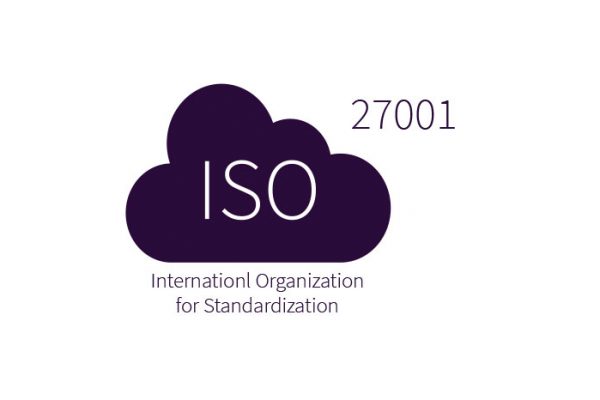That’s a good question (if we do say so ourselves). Brand asset management (BAM) basically does what it says on the tin — it’s software that helps you easily access, manage, and share your brand content, all in a single system.
If you’re dealing with brand assets (the images, videos, basically everything that makes up your brand), it’s likely you’ve asked yourself some of the following questions: Which logo version should be used for Twitter? Who has final approval over this artwork? How do we onboard new staff who need to understand our brand & processes quickly?
BAM software provides processes and pathways that answer these questions and more. The big question remains, though: is it REALLY worth the investment?
In this blog, we’ll take a look at what brand and marketing managers miss out on when they don’t take up a BAM platform and what they achieve by taking it on.
Suggested reading: Going digital is the first step to really seeing growth for your brand and our blog 6 Problems Solved by Digital Brand Management Tools explains why!
Brands need to move beyond a manual approach
Manual approaches to managing your brand assets tend to be mashed together, especially as an organisation grows over time and deals with building assets. Like Frankenstein’s monster, they can become hard to control, and increasingly difficult to understand.
What does a manual approach involve?
Well, we are in the digital age, after all. So it’s not as though manual brand asset management looks the same as it did in the 60s. These days, even manual approaches tend to use some digital tools. The set-up probably looks something like this:
- Brand managers and their teams host their assets within several different file repositories (such as CMS, email software, hard drives, shared networks, etc.), leading to duplications. In the best-case scenario, these assets are uploaded to a central repository. This could be on-site, cloud-based, or a hybrid model combining the two.
- Teams are alerted to updates and the intended usage for the elements in question through long or multiple email threads, or other communication channels, or are even not alerted at all.
- Everyone has template files, if they exist, on their local workstations, where they are changed independently.
- Employees distribute or access these assets according to the latest company instructions.
- External partners are given limited access to what they need for any projects they are on (a folder set up, especially for the project, for example), or time and resources are wasted fielding requests as and when they come in.
The problems with a manual approach
Sometimes the familiar feels comfortable. And often, that sense of familiarity prevents us from seeing the issues that become time-wasting and mundane daily chores. Occasionally someone might get fed up and do a “rejig” of the repository or the communication channels. But problems that can end up happening include:
- Loss of control. It becomes nearly impossible to monitor if employees and outside partners follow your latest brand guidelines. This is especially true for larger or growing organisations and is even more critical given the number of digital channels to keep in mind.
- Loss of control multiplied. The above problem worsens if you have multiple regional or international offices.
- Time gets wasted. Doing everything manually (uploading, updating, informing, removing the old versions) takes ages. Inconsistencies can creep in.
- Bad habits develop. If employees find repositories confusing, difficult to access, or otherwise inconvenient, they often fall back on some really bad habits. Hands up if you’ve seen any of these going on:
- Employees just use old templates they already have on their desktops. “Are they using the same presentation background as last year?!”
- Employees forgo the latest guidelines and add their own choice (maybe not even the “old approved ones”) of fonts, colours, etc to a presentation or report. “Well, this font looks fun!”
- Employees within different departments develop their own bad habits and own systems “independently.” “We’ve been using this template, haven’t you?”
All of this means managers all too often find themselves struggling to keep control and ensure compliance and consistency. Now, manual approaches do sometimes work. It’s just that as companies grow, they tend to become clunky and inefficient. For larger organisations or those experiencing or preparing for growth, brand asset management can help.
Suggested reading: Brand asset management is also massively beneficial to optimising your visual identity. Read our blog to learn how to Enhance Your Visual Identity With Brand Management.
👉 Roll out your brand the right way with The Brand Management Handbook. Take control today! 👈
How brand asset management can help
In the digital-first, still hybrid fast-paced world of branding and marketing, workflows need to be streamlined, efficient, and accurate. A BAM platform enables that.
As you’ll no doubt realise as you read on, this is not just about management and control of existing assets. Features that streamline and solidify workflows and enhance flexibility without creating chaos mean that you’ll be creating better assets altogether.
Let’s go into more detail on the advantages of BAM. That is, we’ll give you some brief summaries that will answer the question: “What’s so great about BAM software?”
Customisable templates
You already know how annoying it is to make small amendments to artwork or graphic documents. Team members request the changes, then have to wait for a turnaround, and then there’s often a need for even MORE changes.
Comprehensive BAM solutions provide you with easy tools to make changes to pre-set templates without the need for back-and-forths. They also provide a range of options to facilitate:
- Localisation of marketing materials (languages, local details etc.),
- Updates to marketing materials (dates, times, prices, etc.)
- Different formats and use of the same artwork (posters, flyers, banner ads, stationery)
The key to this is a strong digital and print template system. This is a simplified design interface that multiple team members can use to make those small changes, within boundaries, that otherwise take up your designers’ valuable time. You should be able to set up multiple templates, allowing your teams across departments and locations to easily customise content for your wealth of channels.
Centralised approval processes
The next brand asset management headache that BAM cures are approvals and annotations. With so much content being produced and changed, staying on top of approvals and team input is an ongoing problem. The temptation to cut corners lurks in the background, risking brand damage.
A BAM solution provides easy-to-set-up, easy-to-use approval and input workflows. No more annoying and confusing email chains spiralling out of control (at least when it comes to your brand assets!) You can set up customised workflows that suit your organisation and the way you work, complete with annotations and audits all within one system. This also solves the nightmare of losing control when multiple team members are involved. Roles can be assigned, pipelines can be monitored in stages, and the system can alert you when you need to come and comment on or approve brand elements.
These clear approval processes allow you to be more flexible with brand changes if you want to evolve or be more creative over time.
👉 Want to create a consistent brand? Check out The Brand Consistency Toolkit for checklists and best practices 👈
Simplified user access
You’ve probably spent quite a while building up your brand guidelines. And you probably update them regularly. Getting the guidelines to new team members or external users and ensuring the updates are rolled out uniformly and quickly are both tasks that take time.
BAM software helps you educate your team members and partners on the importance of your brand in a consistent and simple way. New users have a clear, intuitive one-stop place to view and absorb your guidelines. Existing team members can be sure that the guidelines they see are always up-to-date.
BAM enables you to roll out changes to anyone you choose. All this means quicker, cheaper operations. It also means fewer inconsistencies or branding mistakes. A truly great BAM solution will allow you to link your guidelines to the brand assets in question, roll out guideline changes automatically in other languages, and allow your brand managers more time to focus on other areas.
Digital asset management
Brand managers are very familiar with the wide range of file types that come from various branding pipelines. The digital asset management (DAM) component of BAM provides solutions to the common problems that tend to emerge when dealing with these assets:
- A good DAM system will solve technical difficulties by allowing smooth uploading, downloading, and, most importantly, previewing all the relevant file formats.
- Inaccessibility tends to build up in manual brand asset management. DAM functions allow a good BAM suite to centralise and organise your content. This allows managed access for multiple users without skipping on security or organisational structure.
- Complicated workflows are no problem for a strong DAM system, where communication and collaboration are streamlined. This should save you all that time spent sorting out crossed wires. Everyone can be on the same page all the time!
- Strong branding relies on eliminating brand inconsistency. Again, a decent DAM system will organise and structure your various brand assets, eliminating mistakes in which a team, employee, or partner works with the wrong asset.
Suggested reading: Choosing a DAM system can be an overwhelming process — cut through the noise with the help of our explainer, How to Choose a Digital Asset Management System.
Brandworkz takes you beyond a manual approach
In a nutshell, brand asset management platforms are time-savers and headache-savers Time is money, and headaches are a pain.
That’s why we at Brandworkz developed our system to act as a one-stop shop for several BAM capabilities, including digital asset management, branding workflows, logo management, template design changes, and editable brand guidelines. As you probably already know, fitting a new tool into your workflow can be difficult if it doesn’t integrate with other key parts of your system. Our API allows you to integrate with other applications in your MarTech stack, including Adobe Creative Cloud and Microsoft Office.
For a free unlimited trial of some of our key functions, or to set up a full demo where you can experience the full product for a limited time, click here now.





